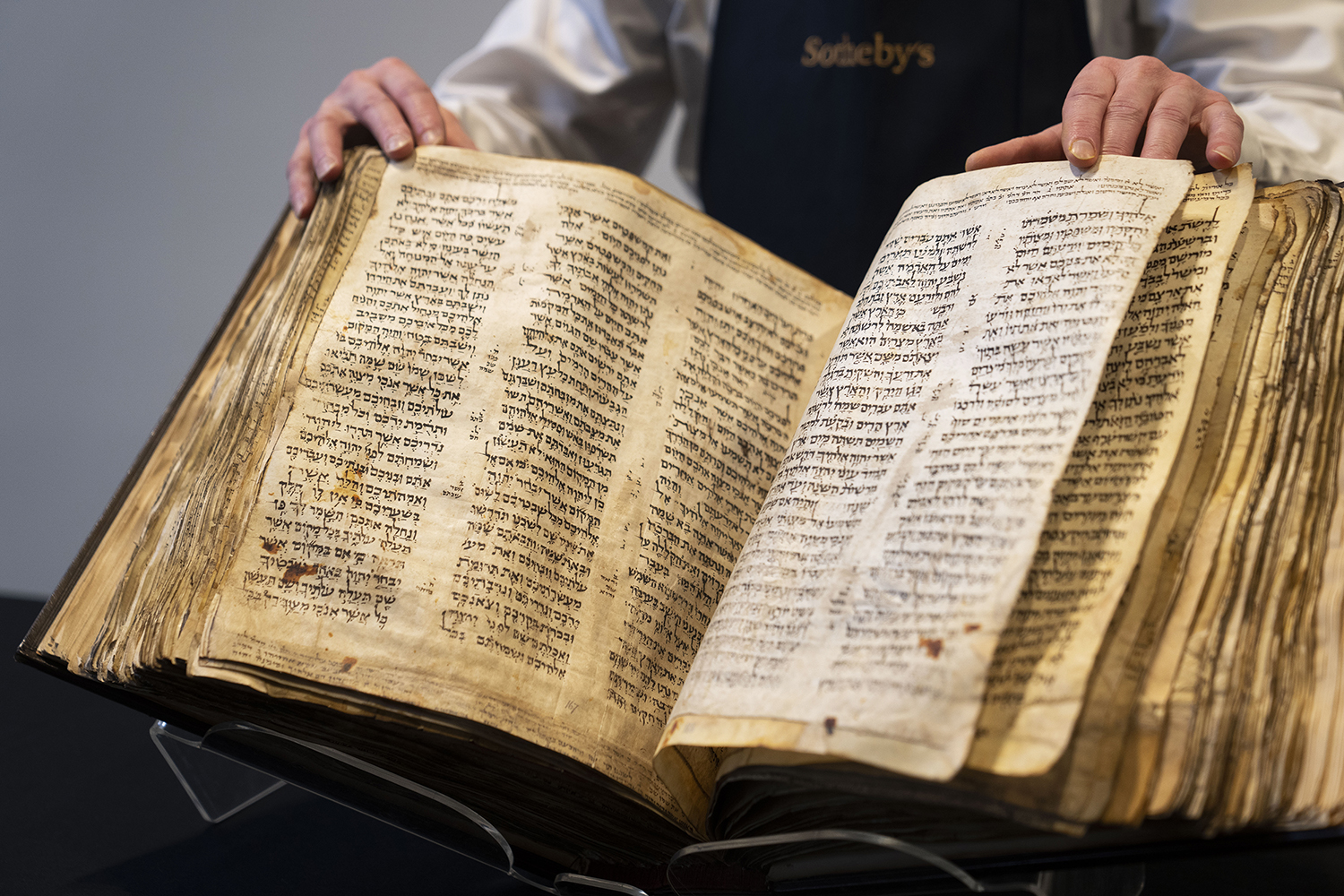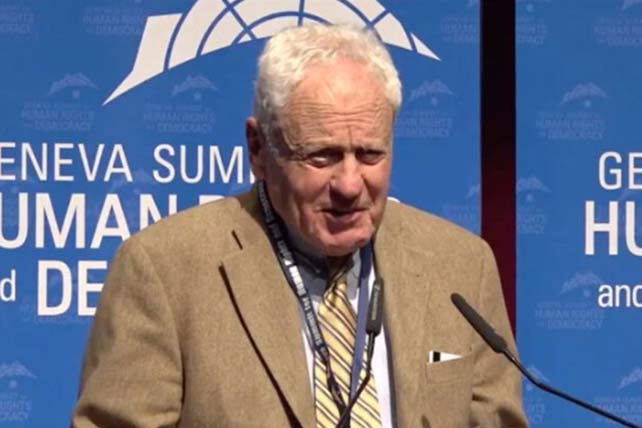When did you first hear about the Codex Sassoon?
I didn’t hear about it until about three months ago. I knew the Museum of the Jewish People in Tel Aviv. They informed me they had been selected to exhibit the Sassoon Codex in Israel. I thought, OK, let’s take a look and maybe I and some others can buy it. And the others disappeared. They weren’t interested. So I said to myself, okay, Alfred, you buy it and provide the funds for ANU to buy it. I had no idea whether I’d be successful. I thought my chances were maybe 50/50, that somebody far richer than I would swoop in and buy it. But we were lucky enough to get it, and now it’s on its way to ANU.
What made you decide to acquire the codex and donate it to the museum?
This is a very important document. It’s the oldest complete Bible, and I thought it would be a source of enormous interest and pride and education for Jews worldwide. Israel is pretty divided politically, so it’s more important than ever that we think of ourselves as part of the Jewish people worldwide. And this to me could be a magnet that would attract Jews to Israel to see it and take pride in our commonality.
I hope it will be used at ANU to bring tens of thousands or hundreds of thousands of Jews and non-Jews to view ANU in its entirety, the Museum of the Jewish People. It’s quite inspiring. And this, I think, will be the centerpiece of the museum in Tel Aviv. Scholars will have access to it. People will see it and, I think, have a renewed respect for our traditions.

Sotheby’s unveils the Codex Sassoon for auction, Wednesday, Feb. 15, 2023, in the Manhattan borough of New York. The auction house is billing the lot as the “earliest, most complete Hebrew Bible ever discovered.” (AP Photo/John Minchillo)
Can you describe the moment you saw the Codex in person?
This week was the first time I saw it. I was amazed. It’s smaller than I assumed. It’s more structurally sound. It’s all on sheep skin, and you can turn the pages. The lettering is quite legible. I can read it quite easily. It has the vowels, which is quite unusual. To think it was written over 1,000 years ago is truly amazing. And it’s a precious document. The oldest Hebrew Bible in the world now belongs to the Jewish people and is in Israel.
How did you and your family come to acquire the funds to make this donation?
For better or for worse, there’s only I. I put my family down because by giving this to ANU, it’s funds my children and grandchildren will not receive. So they’re giving it along with me. I was enormously fortunate in my life. I was a practicing lawyer of 60 years. I suppose by most standards, I was quite a successful lawyer serving clients throughout the world. I saved what money I could, I invested it, and was more than fortunate in my investments. I was blessed. I never inherited a nickel. Whatever money I have is money I made.
What does your religious or spiritual life look like today?
I describe myself as an observant, non-believing Jewish universalist. I have a Kosher home. I am Shomer Shabbat. I think God is an aspiration. I can’t get around my small brain the notion a God who created this world is sitting in judgment. But I’m very respectful of those who are observing and are also believers. I just happen not to be, but I am one who believes in the Jewish tradition. I believe in the Jewish sense of meaning, which we want to impart upon our lives, not to simply come and go. I like to think there’s a larger purpose in human beings. And it’s up to us to live up to that aspiration of the God, who, to my thinking, we’ve created. The commandment to Abraham was to do what’s right and just. And that’s still the message. And if we can do what’s right and just, that’s worthwhile. I believe in that.
This article originally appeared here.

